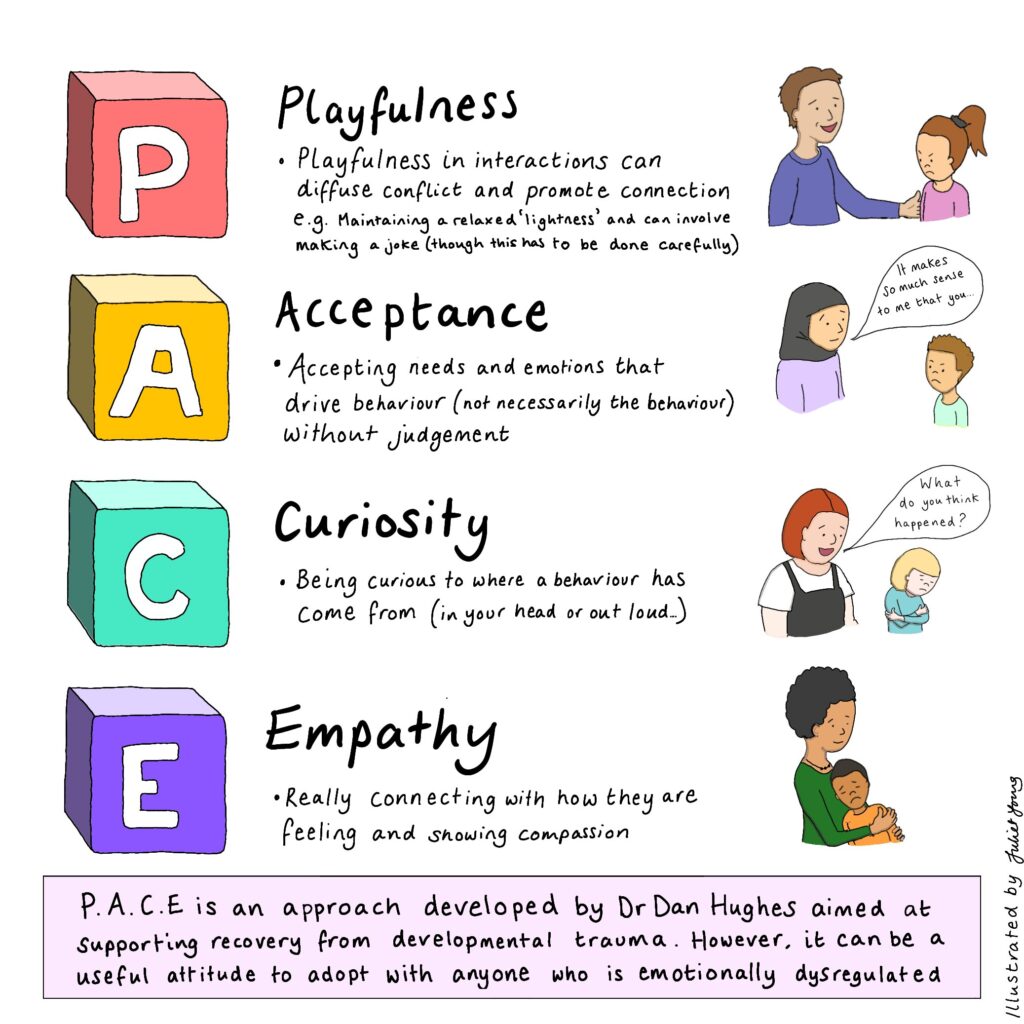The PACE model, developed by psychologist Dan Hughes, is comprised of four principles:

This approach is rooted in attachment theory as it recognises the critical role of a primary caregiver who can consistently incorporate PACE elements into their interactions. What might this look like in practice? Here are some ideas:
- Playfulness: engage in imaginative play where you can encourage creativity through role-playing, games, puppets and toys. A sense of humour and silliness creates moments of shared laughter and enjoyment as well as diffusing tension when things are difficult.
- Acceptance: respond to the child for who they are, rather than how you feel they should be. Create a safe place for self-expression where children feel heard, acknowledged, and validated. Avoid shaming a child for their actions or ideas. Look for constructive ways to address concerns. Practising acceptance helps a child to build her sense of self as well as their confidence and trust in your relationship.
- Curiosity: be open to learning from the child to understand them better. Ask open-ended questions and actively listen to the answers. This encourages self-reflection.
- Empathy: Responding to a child with empathy allows a child to know that you understand how they feel. A child might also find comfort knowing that you are trying to see things from their point of view and you are there to support them.
Read more about the PACE approach: here

Apply Your Thinking:
What might be the impact of using the PACE approach on child development?
The PACE model also emphasises the importance of repairing any ruptures that occur in interactions. Using the elements of PACE can restore trust and strengthen the attachment bond. Rupture and repair is part of any relationship, and strengthens the connection between people by building resilience. The focus does not need to be on ensuring that ruptures never occur, but that these ruptures are intentionally repaired.






